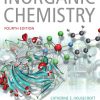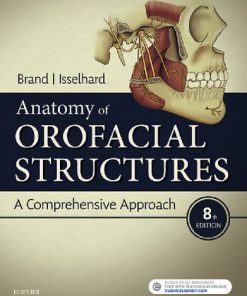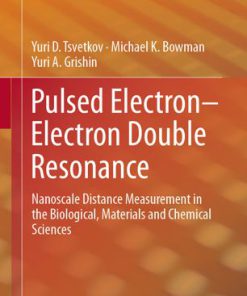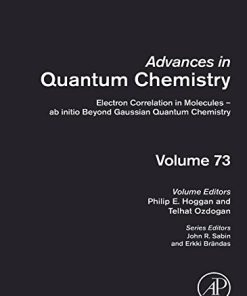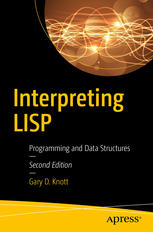Bonding in Electron Rich Molecules Qualitative Valence Bond Approach via Increased Valence Structures 2nd Edition by Richard D Harcourt ISBN 3319166751 9783319166759
$50.00 Original price was: $50.00.$25.00Current price is: $25.00.
Bonding in Electron Rich Molecules Qualitative Valence Bond Approach via Increased Valence Structures 2nd Edition by Richard D Harcourt – Ebook PDF Instant Download/Delivery: 3319166751, 9783319166759
Full download Bonding in Electron Rich Molecules Qualitative Valence Bond Approach via Increased Valence Structures 2nd Edition after payment
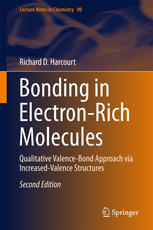
Product details:
ISBN 10: 3319166751
ISBN 13: 9783319166759
Author: Richard D Harcourt
Bonding in Electron Rich Molecules Qualitative Valence Bond Approach via Increased Valence Structures 2nd Table of contents:
1 Atomic Orbitals, Electron Spin, Linear Combinations
1-1 Atomic Orbitals
1-2 Electron Spin
1-3 Linear Combinations of Wave Functions
References
2 Pauling “3-Electron Bonds”, 4-Electron 3-Centre Bonding, and the Need for an “Increased Vale
2-1 Introduction
2-2 Electron Deficient and Electron Excess Bonding Units
2-3 Delocalized Molecular Orbital Theory for 4-Electron 3-Centre Bonding Units
2-4 Standard Valence-Bond Theory for N2O and F2O2
2-5 “Long-Bond” Lewis Structures and a Need for an “Increased-Valence” Theory
2-6 Increased-Valence Structures: Some General Comments
References
Addendum Chapter 2
3 Wave-Functions and Valence-Bond Structures for 1-Electron Bonds, Electron-Pair Bonds, Pauling “3
3-1 Diatomic Bonding and Antibonding Molecular Orbitals
3-2 One-Electron Bonds
3-3 Electron-Pair Bonds
3-4 Electron Spin Wave-Functions for One-Electron and Two-Electron Systems
3-5 An Important Identity: 1 bonding electron + 1 anti-bonding electron = 2 “non-bonding” electr
3-6 The Pauling “3-Electron Bond”
3-7 Slater Determinants and the Pauling “3-Electron Bond”
3-8 “No Bonds”
3-9 Valence-Bond Structures and Bond Properties for H2+, H2, He2+ and He2
3-10 Inclusion of Overlap Integrals in Normalization Constants for Molecular Orbitals; Non-Bonded Re
3-11 Bond-Orders
References
Addendum Chapter 3
4 Valence-Bond Structures for some Diatomic and related Molecules
4-1 Molecular Orbital Configurations for Homonuclear Diatomic Molecules
4-2 Li2, Be2, N2, F2 and O22–
4-3 O2, O2+, O2– and O22–
4-4 CN–, CO and NO+
4-5 NO and SN
4-6 S2, SO and NO–
4-7 ClO and FO
4-8 ClF2 and SF3
4-9 N-H Bond-Strengths of NH3, N2H4, N2H2, and HN2– H + N2
Addendum Chapter 4
5 Pauling “3-Electron Bonds” and Hypoligated Transition Metal Complexes
5-1 Hypoligated and Hyperligated Transition Metal Complexes
5-2 Pauling “3-Electron Bonds” and the Electronic Structure of [Fe(H2O)6]2+
5-3 Metal-Ion Spin-State and Metal-Ligand Bond-Lengths
5-4 Interconversion Between Hypoligated and Hyperligated Electronic States
5-5 Metal-Ligand p-Bonding and Pauling “3-Eelectron Bonds”
References
6 Pauling “3-Electron Bonds”, 5-Electron 3-Centre Bonding and Some Tetra-Atomic Radicals
6-1 NO2
6-2 CO2- and BF2
6-3 Triatomic Radicals with 19 Valence-Shell Electrons: O3–, SO2–, NF2 and ClO2
6-4 3-Centre Molecular Orbitals and Pauling “3-Electron Bonds”
6-5 Some Tetra-Atomic Radicals
References
Addendum Chapter 6
7 Some Dimers of Triatomic Radicals with 17 and 19 Valence-Shell Electrons
7-1 The Long, Weak N-N Bond of N2O4: Lewis Valence-Bond Theory
7-2 The Long Weak N-N Bond of N2O4: Molecular Orbital Theory11,12
7-3 The Planarity of N2O4, Covalent-Ionic Resonance and cis O-O Pauling “3-Electron Bonds”
7-4 C2O42– and S2O42– Anions
7-5 B2Y4 (Y = F, Cl or Br), N2F4 and P2F4
7-6 The Geometries of P2F4 and S2O42-
7-7 C-Nitroso Dimers and S4N4
References
Addendum Chapter 7
8 Some Cu(II) Binuclear Transition-Metal Complexes
8-1 Cu(II) Carboxylate Dimers, Cu2(RCO)4Ln
8-2 Cu(II)-X-Cu(II) Linkages
References
Addendum Chapter 8
9 Excited States
9-1 H2 : s → s*; C2H4 : p → p*
9-2 n → π* Transitions
9-3 CH3NO and O3: “n → π*”
9-4 O2: * *x y π ®π and *x x π ® π
Reference
Addendum Chapter 9
10 Pauling “3-Electron Bonds” and “Increased Valence” Theory for N2O4
10-1 Pauling “3-Electron Bonds” and “Increased-Valence” Structures for N2O4
10-2 “Increased-Valence” Structures and Molecular Orbital Theory for N2O4
10-3 “Increased Valence” Theory and Configuration Interaction for N2O4
10-4 Conclusions
References
11 Pauling “3-Electron Bonds” and “Increased-Valence” Structures
11-1 Pauling “3-Electron Bonds” and 4- Electron 3-Centre Bonding
11-2 “Increased-Valence” or Electronic Hypervalence via Pauling “3-Eelectron Bonds
11-3 Nitrosyl Halides
11-4 CH3NO and HNO
11-5 Some Dioxygenyl Compounds
11-6 Some S-O and S-S Compounds
11-7 O3, SO2, S2O and NO2-
11-8 Pauling “3-Electron Bonds” and 6-Electron 4-Centre Bonding: N2O2, Cl2O2, S2O2 and S2I42+
11-9 NO2, -2 NO , ClO2, -2 SO and SO3
11-10 N2O4, N2O3 and FNO2
11-11 sym NO3 and asym N2O4
11-12 Conclusions
References
12 Increased-Valence Structures Constructed from Lewis Structures: Delocalization of a Lone-Pair Ele
References
13 “Increased-Valence” Structures for N-Centre Bonding Units
13-1 N2O and some Isoelectronic Molecules and Ions with 4-Electron 3-Centre Bonding Units
13-2 N2O4, C2 O42 – and (RNO)2 , with 6-Electron 4-Centre Bonding Units
13-3 Comments on 6-Electron 4-Centre Bonding Units
13-4 Cyclic 6-Electron 4-Centre Bonding Units
13-5 Branching 6-Electron 4-Centre Bonding Units
13-6 6-Electron 5-Centre Bonding Units: C3O2, Succinimide, and Pyrrole
13-7 8-Electron 6-Centre Bonding Unites: Diformylhydrazine, N-alkyl sydnones and Dehydrodithizone
13-8 “Increased-Valence” Structures for Longer
13-8 “Increased-Valence” Structures for Longer N-Centre Bonding Units
13-9 Paramagnetic “Increased-Valence” Structures
References
13-10 Addendum Chapter 13
14 Delocalization of a Lone-Pair Electron into a Vacant Antibonding Orbital: Increased-Valence Struc
14-1 Delocalization of a Lone-Pair Electron into a Vacant Antibonding Orbital
14-2 Approximate Molecular Orbital Theory for 4-Electron 3-Centre Bonding Units
14-3 Atomic Valencies for “Increased-Valence” Structures12
References
Addendum Chapter 14
15 Slater Determinants and Wave- Functions for “Increased-Valence” Structures
15-1 “Increased-Valence” Wave-Functions for 4-Electron 3-Centre and 6- Electron 4- Centre Bondin
15-2 Spin Degeneracy and Wave-Functions for “Increased-Valence” Structures
16 Classical Valence Bond Structures and Quinquevalent Nitrogen Atoms
References
Addendum Chapter 16
17 Some Tetrahedral Molecules and dπ – pπ Bonding for some Sulphur Compounds
17-1 d-Orbitals as Polarization and Hybridization Functions
17-2 F2SO, F2SS, and (CH3)2SO
17-3 F3NO, (CH3)3NO, F3SN, and FSN
17-4 Sulphones XYSO2
17-5 NO43-, PO34- and F3PO
17-6 S2On2- (n = 3, 4, 5, 6)
References
Addendum Chapter 17
18 Transition Metal Complexes with CO, N2, NO and O2 Ligands
18-1 Carbonyl Complexes
18-2 Dinitrogen Complexes
18-3 Transition Metal Nitrosyl Compounds
18-4 Dioxygenyl Adducts
References
Addendum Chapter 18
19 Some Electron-Excess σ Bonded Systems
19-1 Trihalide Anions and some Related Molecules
19-2 The Polyiodide Anions
19-3 Xe2F3+ and H2F3–
19-4 ClF5 and SF6
19-5 Thiothiophthenes
References
20 Intermolecular Donor-Acceptor Complexes
20-1 Quantum Mechanical Description of Donor-Acceptor Complexes
20-2 Complexing of Trimethylamine with Molecular Iodine
20-3 Hydrogen Bonding Between two H2O Molecules
20-4 Reformulation of Charge-Transfer Theory8
20-5 Increased-Valence Structure with Three 2-Centre Bond Orbitals
20-6 H5O2+ and HF2–
20-7 2:1 Donor-Acceptor Complexes
References
21 Base-Displacement Reactions and Electron Conduction in Alkali Metals
21-1 Introduction
21-2 Lowry-Brønsted Acid-Base Reactions
21-3 Walden Inversion Mechanism
21-4 Electron Conduction in Alkali Metal Solids
21-5 E2 Elimination Reactions
References
Addendum Chapter 21
22 Free-Radical and Spin-Paired Diradical Reactions
22-1 Types of Free Radical Reactions
22-2 R + O3 – RO + O2, with R = H, Cl, and NO
22-3 Reactions of O2 with Fe(II) Porphyrin Complexes
22-4 “1,3 Dipolar” (or “Zwitterionic Diradical Hybrid”) Cycloaddition Reactions
22-5 Thermal Decomposition of o-Nitrophenylazide
People also search for Bonding in Electron Rich Molecules Qualitative Valence Bond Approach via Increased Valence Structures 2nd:
bonding in electron-rich molecules: qualitative valence-bond
bonding valence electrons
bond in which valence electrons are shared by all atoms
bonding electron pairs
Tags:
Richard D Harcourt,Molecules,Electron,Valence Bond,Structures
You may also like…
Medicine - Dentistry
Anatomy of Orofacial Structures A Comprehensive Approach 8e 8th Edition Richard W Brand Bs Dds
Relationships & Lifestyle - Diet & Nutrition
Relationships & Lifestyle - Psychological Self-Help
Empirical Political Analysis Quantitative and Qualitative Research Methods Richard C. Rich
Politics & Philosophy - Social Sciences
Future Families Diverse Forms Rich Possibilities 1st Edition Ross D. Parke
Biology and other natural sciences
Electron correlation in molecules — ab initio beyond Gaussian quantum chemistry 1st Edition Hoggan
Politics & Philosophy
Politics & Philosophy - Government & Politics
Journey Into Social Activism Qualitative Approaches Joshua D. Atkinson


